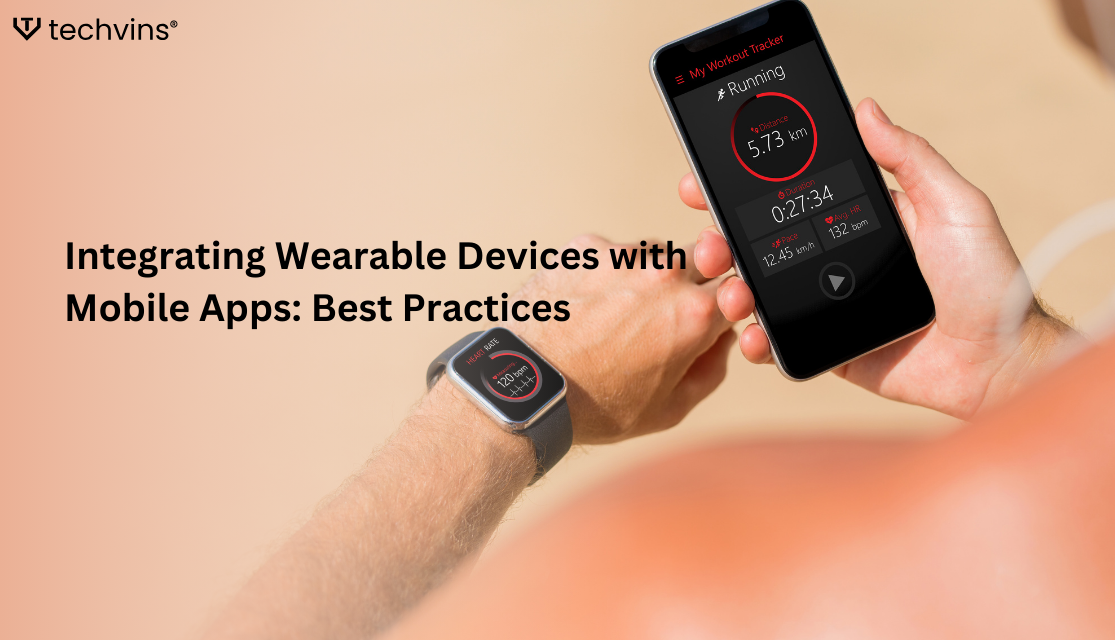Integrating Wearable Devices with Mobile Apps: Best Practices

As wearable technology advances quickly, the combination of wearables with smartphone apps is revolutionizing a variety of sectors, including healthcare, fitness, entertainment, and more. These gadgets, which include fitness trackers, smart glasses, and smartwatches, give consumers constant data that can be utilized for a variety of purposes, including health tracking and real-time monitoring. To guarantee smooth operation and a satisfying user experience, there are particular difficulties and best practices when combining wearable technology with mobile apps. The best practices for integrating wearable technology with mobile apps are listed below.
1. Understand the Device's Capabilities and Limitations
Understanding the wearable device's capabilities and limits is essential before starting the integration process. The functionality of various wearables, including GPS tracking, step counting, heart rate monitoring, and more, varies. Knowing whether devices have limited processing power, battery life, or sensors can assist make sure the software is compatible with the wearable. Developers may create mobile apps that optimize the device's capabilities while reducing user annoyance by carefully examining its features and constraints.
2. Ensure Cross-Platform Compatibility
Wearables frequently function on a variety of platforms, including proprietary systems, iOS, and Android. To guarantee a consistent user experience regardless of the operating system the user is using, it is imperative that the mobile application connects seamlessly across different platforms. By modifying the integration in accordance with platform-specific standards and capabilities, developers should strive to produce apps that function well on both iOS and Android devices. This procedure can be streamlined by using cross-platform development frameworks like React Native or Flutter, which guarantee seamless operation across several operating systems.
3. Optimize for Battery Life
Battery life is an important factor because wearables are made to run constantly throughout the day. The battery life of wearable technology shouldn't be unduly depleted by integrating it with mobile apps. Developers should use effective communication protocols, like Bluetooth Low Energy (BLE), to maximize the data flow between the wearable and the mobile app. BLE ensures that the wearable device stays functioning for longer by lowering the power needed for data transmission between the wearable and the mobile app.
4. Focus on Real-Time Data Synchronization
The capacity of wearable technology to record data in real time, including heart rate, steps taken, or sleep patterns, is one of its key benefits. Mobile apps should be able to synchronize with the wearable device in real-time to give consumers the best possible experience. Developers must make sure that there are no lags or delays in the data transfer from the wearable mobile app. To guarantee that consumers have the most recent information on their devices without needless delays, this calls for the implementation of dependable communication protocols, strong data handling procedures, and effective syncing methods.
5. Provide Personalized User Experience
Wearables gather a lot of personal information that may be utilized to provide consumers with experiences that are tailored to them. Based on the user's behaviors, preferences, and health parameters, mobile apps should use this data to offer recommendations and actionable insights. For instance, health apps can provide advice on how to manage stress or get better sleep, while fitness apps can use activity data to provide customized exercise regimens. Mobile apps can improve user engagement and retention by giving users data specific to their requirements, which will make the wearable experience more relevant and meaningful.
6. Prioritize Security and Privacy
Data security is a major concern since wearable technology gathers sensitive personal data, including location, activity level, and health parameters. Strong encryption techniques must be used by developers when connecting wearables with mobile apps in order to safeguard user data while it is being transmitted and kept on the device. In order to guarantee that users' personal information is handled properly and securely, it is also critical to adhere to data privacy laws like GDPR and HIPAA. Building trust and guaranteeing compliance require giving consumers clear privacy rules and choices to manage their preferences for data sharing.
Conclusion
There is enormous potential to improve user experiences and give real-time data insights by integrating wearable technology with mobile apps. However, focusing on speed optimization, security, and developing user-friendly interfaces that function across devices is necessary to achieve seamless integration. Developers may produce mobile apps that offer consumers individualized and meaningful experiences and help them make the most of their wearable devices by following these best practices. Mobile app integration with wearables will only become more important as these devices develop further in order to deliver the next generation of intelligent, connected experiences.
- Questions and Answers
- Opinion
- Motivational and Inspiring Story
- Technology
- Live and Let live
- Focus
- Geopolitics
- Military-Arms/Equipment
- Segurança
- Economy
- Beasts of Nations
- Machine Tools-The “Mother Industry”
- Art
- Causes
- Crafts
- Dance
- Drinks
- Film/Movie
- Fitness
- Food
- Jogos
- Gardening
- Health
- Início
- Literature
- Music
- Networking
- Outro
- Party
- Religion
- Shopping
- Sports
- Theater
- Health and Wellness
- News
- Culture


